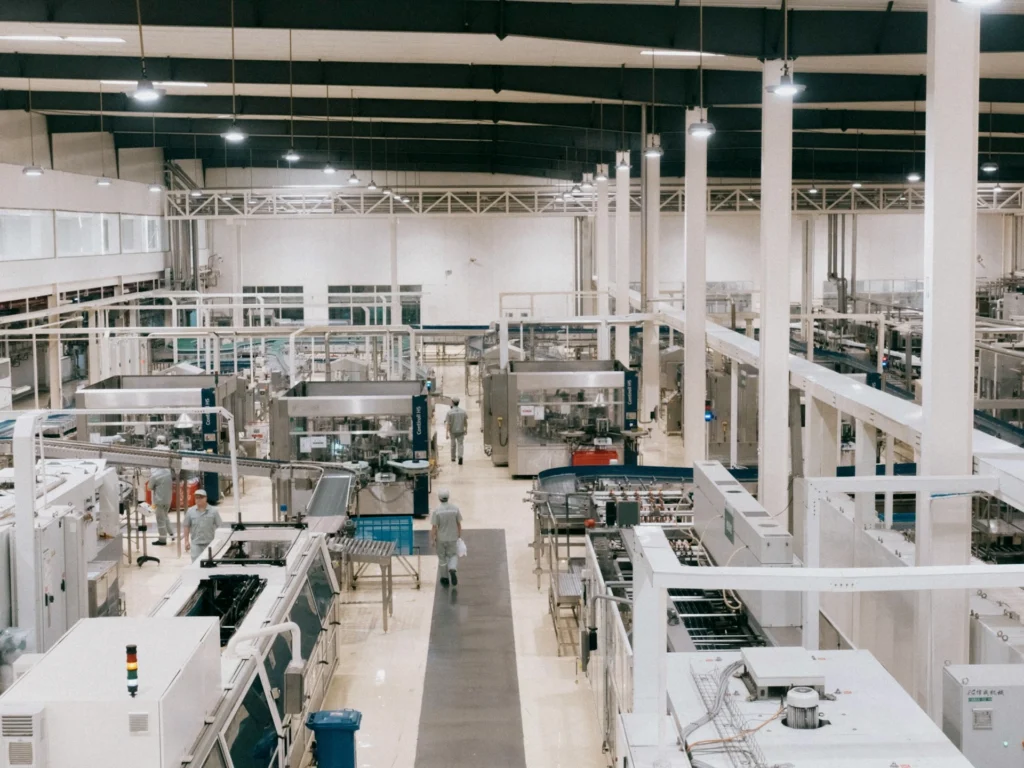In a nutshell:
- Customer Lifetime Value (CLV) is crucial for long-term business success
- Predictive insights can help forecast and influence CLV
- Factors influencing CLV include customer satisfaction, loyalty, and spending behavior
- Implementing CLV models requires a strong data infrastructure and skilled analytics team
- Predictive insights can be leveraged for marketing decisions and customer service improvements
Understanding and maximizing customer lifetime value (CLV) is critical for long-term business success. Many strategies have been developed over the years to do this, but new developments are happening all the time. Predictive insights are one such development, using advanced technology to help you forecast and influence CLV.
This post provides in-depth strategies for implementing CLV models to drive marketing and customer service decisions. These new techniques and tools can improve your CLV for renewed business success.
Understanding Customer Lifetime Value
Customer lifetime value (CLV) is a performance metric within a business strategy representing the total profit a company expects to earn from a customer throughout their business relationship. It's an estimation of the net profit attributed to the entire future relationship with a customer. In simple terms, CLV is the total amount a customer is likely to spend on your products or services over their lifetime.
Calculating CLV can be as simple or as complex as a company chooses depending on the available data. A basic calculation can be achieved by multiplying the average purchase value by the frequency of purchase and the average customer lifespan.
However, more precise calculations often factor in elements such as customer acquisition and retention costs, discount rates, and customer attrition rates to form a more realistic and specific view of the CLV for a particular customer.
Factors Influencing CLV
Several factors can influence a customer's CLV, including customer satisfaction, loyalty, and spending behavior. Customer satisfaction is potentially the most important factor among these and plays a significant role in customer retention and, consequently, CLV. By ensuring that your customers have a satisfying buying experience that gets them products that provide real value to their lives, they’re more likely to spend more and more frequently.
Similarly, customer loyalty directly impacts the frequency and volume of purchases, thereby affecting CLV. Fostering loyalty to your business can see you through tough times, as loyal customers will be more willing to handle minor inconveniences or issues to continue supporting your products. To these customers, you aren’t simply another business; you’re a part of their lives.
Spending behavior patterns, new product adoption rates, and customer engagement in promotional activities are other vital considerations when measuring CLV. These all measure the different ways in which your customers interact with your business.
From how much and how often they spend, their willingness to buy new products, and how engaged they are with different promotions in-store and online, these all provide an insight into how much you can expect your customers to be willing to spend in the future. Understanding these factors will provide a solid foundation for leveraging predictive insights to maximize CLV.
Predictive Analytics for CLV Maximization
Predictive analytics provide businesses with the ability to anticipate consumer behaviors and trends, thus aiding in maximizing CLV. By leveraging machine learning algorithms and statistical techniques, predictive analytics can forecast future customer behavior based on historical and current data. Let’s take a deeper look into the how and why of this technology and what it means for your business.
What Role Do Predictive Insights in Forecasting Play in Your CLV?
Predictive insights can accurately forecast a customer's CLV. Using historical data, companies can identify purchase patterns and trends that can help predict customers' future behaviors. Such predictive models can account for factors such as customer loyalty, purchase frequency, and spending habits.
Predictive insights can also help businesses identify at-risk customers who might churn, allowing companies to proactively address issues and retain those customers. This not only helps to maintain existing CLV but also to increase it by establishing a stronger relationship with the customer.
Strategies for Implementing CLV Models
Implementing successful CLV models requires a strong data infrastructure and a skilled analytics team. Companies also need to periodically update their models to reflect changes in customer behavior and market conditions.
Machine learning algorithms, such as linear regression, decision trees, and clustering, can help improve the accuracy of CLV predictions. These algorithms can capture complex relationships between variables and improve prediction accuracy.
The first of these—linear regression—is a statistical approach to predicting the dependent variable (CLV) when the variable is continuous. This model uses the relationship between data points to draw a straight line through all of them that predicts future outcomes. By doing this, businesses can analyze past purchasing behaviors, identify trends, and extrapolate these trends to predict future spending.
Decision trees are a type of machine learning model that can be particularly effective in predicting CLV. This algorithm uses a tree-like model of decisions based on different customer behaviors or characteristics. By looking at an origin point (a certain behavior) and extrapolating based on whether or not that behavior happens above or below a certain threshold, the model can continue to branch out in order to predict the likelihood of certain actions happening.
Clustering is another technique used in predictive analytics. It's a statistical method that involves grouping together customers based on similarities in their behaviors. This can reveal natural groups or "clusters" within your customer base that behave similarly, and can therefore be approached with similar marketing strategies. Clustering not only helps in understanding the various customer segments but can also aid in identifying patterns and trends.
Harnessing Big Data for Predictive Analytics
Effectively using predictive analytics to maximize CLV requires the use of big data, which comprises large datasets that can be computationally analyzed to reveal patterns, trends, and associations. Big data in the context of CLV includes customer transaction histories, social media interactions, website visits, and similar things. This huge amount of data, when properly analyzed, can provide valuable insights into customer behavior and preferences.
Big data technologies such as advanced data management systems, powerful analytical tools, and cloud-based services can handle these large datasets, enabling businesses to extract valuable predictive insights. These technologies are necessary for the successful application of predictive analytics in CLV maximization.
Leveraging Predictive Insights for Marketing Decisions
Predictive insights are invaluable in guiding marketing decisions. They provide a data-driven approach to understanding customer behaviors and carving out targeted campaigns for effective marketing. By properly leveraging your analytics, you can find new ways to convert customers and attract new ones. Some clever strategies you can use with your new insights include:
Targeted Campaigns and Personalization
Using the information from predictive analyses, marketers can understand more about customer preferences and habits. This goes beyond the basic demographic information and includes the types of products they prefer, the times of day they shop, and their responsiveness to different marketing messages. With this in-depth knowledge of their customer base, marketers can tailor their messaging and offers to match each customer's unique needs and preferences.
This tailoring can involve personalized emails, specific product recommendations, and targeted promotions that cater to each customer's interests. This level of personalization not only serves to attract customers but also fosters a deeper connection, building a strong customer relationship that can lead to increased CLV.
Customer Segmentation Based on CLV
Predictive insights also allow for effective customer segmentation based on CLV. This means companies can identify the most profitable customer segments and target their resources accordingly. Such targeted marketing can result in higher customer satisfaction and loyalty, ultimately leading to an increase in CLV.
Strategies can be customized for each individual group customers are segmented into. High-value customers, for instance, could be the focus of loyalty programs or exclusive offers, while strategies for medium or low-value customers might focus more on upselling or increasing purchase frequency.
Tailoring marketing strategies to each customer segment can help businesses optimize resource allocation and attain a higher return on marketing investment while bolstering the overall CLV.
Real-Time Campaign Adjustments
When your customer data is continually generated and updated, the real-time insights gleaned from them can be incredibly powerful. Predictive analytics not only utilizes historical data but can also incorporate this real-time data to provide more accurate and timely predictions. By keeping a watchful eye on your customers’ data, you can make adjustments to your campaigns in real time to improve their experience and maximize their CLV.
For instance, real-time predictive insights can identify a sudden shift in purchasing behavior immediately. This allows businesses to promptly adjust their marketing strategies or reach out to specific customers before opportunities are lost. A business's ability to respond instantaneously to a customer's changing needs or preferences can increase a customer's value substantially.
Not only that, predictive analytics can provide near-real-time insights into the efficacy of ongoing marketing campaigns. This information can empower businesses to make necessary adjustments on the fly, improving the success rate of such efforts. Identifying strong or weak performing strategies quickly can help businesses can optimize their marketing efforts, boosting the effectiveness of marketing decisions, and maximizing CLV.
Utilizing Predictive Insights for Customer Service
Your predictive insights are useful for more than just marketing strategies. Your new tools can improve almost any aspect of your business, including customer service experiences. Take a look at how you can use your insights in this area.
Proactive Customer Support and Retention Strategies
Predictive insights can be a great guideline for improving customer service. For instance, by identifying customers who are likely to churn, businesses can proactively engage with them and address their concerns. This could involve tailored offers, improved service, or addressing product issues.
You can even use your insights to improve customer service training and development. By leveraging data from previous customer interactions, businesses can identify patterns that indicate the most effective communication and problem-solving strategies. This could guide the creation of training programs for customer service representatives, empowering them to exceed customer expectations and cultivate stronger relationships.
Predictive models can also highlight areas where customer service staff may need additional support or resources, enabling businesses to continually refine and improve their customer service operations.
Enhancing the Customer Experience With Insights from the CLV
By understanding the various factors that influence a customer’s lifetime value, businesses can work towards enhancing the overall customer experience. This could involve a number of things, from refining the product portfolio to better match customer interests (both broadly and niche), improving service quality, or personalizing interactions based on customer preferences.
Predictive analytics can also be beneficial in predicting and promptly addressing any potential issues that might negatively affect customers' experiences. With these insights, businesses can take proactive measures to rectify issues before they affect customers, thereby ensuring an uninterrupted and smooth customer journey.
Challenges and Best Practices
Gaining awareness of the CLV and the predictive insights that data can produce may seem like a foolproof strategy, but you must acknowledge that there will be certain challenges throughout the process. By keeping a number of best practices in mind, though, you can overcome any problems that arise and create a better customer experience that helps your business thrive.
Overcoming Obstacles in Implementing CLV Strategies
Some common challenges businesses face when implementing CLV strategies include:
- Lack of Data: Establishing a comprehensive CLV strategy requires robust data on customer behavior. However, not all businesses have access to such data, or the data they have may not be comprehensive or of high quality.
- Tech Challenges: The advanced technology and analytics systems necessary for calculating and utilizing CLV can be hard to implement and require specific expertise to operate. Smaller or newer businesses may especially struggle with this aspect.
- Change Resistance: In many organizations, shifting to a CLV-focused strategy may require a significant mindset change. Some businesses are used to focusing on short-term gains rather than long-term customer value, and the shift can be met with resistance.
Recognizing these challenges is the initial step to overcoming them. With a clear comprehension of what might stand in your way, you can begin strategizing ways to approach these obstacles. Invest in good quality data collection practices and ensure you have or can hire people with the necessary skills to operate advanced analytical tools.
Promoting a company-wide awareness of the importance of focusing on CLV can also be beneficial in encouraging buy-in from staff at all levels. Regular model updates and a clear grasp of the metrics involved are also crucial to successfully leveraging CLV.
Best Practices for Sustained CLV Growth
To sustain CLV growth, businesses must ensure consistent customer satisfaction. This involves regularly monitoring customer feedback for ways to improve, maintaining high service standards, and continually innovating to meet changing customer needs.
Maximize CLV With Predictive Insights Today
Predictive insights provide invaluable tools for maximizing CLV. With a strong understanding of CLV and its influencing factors, you can leverage predictive analytics to drive marketing and customer service decisions.
It’s time data leaders began to embrace predictive insights and make data-driven decisions to maximize CLV in the workplace. To learn more about leveraging predictive analytics for CLV maximization, get a demo of Pecan AI so we can show you how it works.








